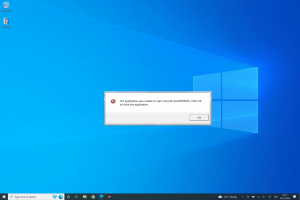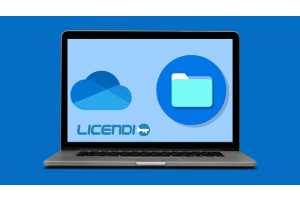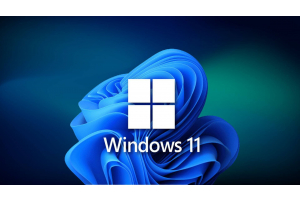What is Windows Server and how does it differ from Windows 10?

What is Windows Server 2016 and 2019 and what is it used for? The following explains how Windows Server differs from the other editions of Windows (Windows 10 Pro or Home).
Introduction
If you're a regular computer user, you may have only come across the Home Consumer Editions of Windows 10 Pro and Home. But did you know that Microsoft also offers a complete range of Windows Server operating systems?
Let's look at the differences between Windows Server 2016 and 2019 and Windows 10 Pro or Home. We will look at what they include, what they leave out and why they are so different.
What is Windows Server 2016 and 2019?
If you have never heard of Windows Server 2016 and 2019, let us first explain what it is. Windows Server is essentially a set of operating systems that Microsoft develops specifically for use on a server. Servers are extremely powerful machines that are designed to run continuously and provide resources to other computers. Therefore, in almost all cases, Windows Server is only used in corporate environments.
Microsoft has released Windows Server 2016 and 2019 under this name since its introduction in April 2003. But even before that, there were server versions of Windows. For example, Windows NT 4.0 was available in both a workstation (general purpose) and a server version.
In almost all cases, normal users do not need to worry about servers. They won't find it on shop shelves or accidentally download it from Microsoft if they want to get the standard version of Windows 10 Pro or Home. But it's still interesting to know about it to stay up to date.
Windows Server vs. Windows 10: The Basics

At first glance, you may not be able to tell the difference between Windows Server and the regular Windows 10 Pro or Home versions. The desktop looks the same, including the taskbar, desktop icons and the Start button.
It turns out that each version of Windows Server corresponds to a consumer version of Windows. Windows Server 2003, for example, is the server version of Windows XP. Current versions include Windows Server 2016, which is based on the Windows 10 Anniversary Update, and Windows Server 2019, which is based on Windows 10 version 1809.
Because Windows Server and Windows 10 Pro or Home share a common code base, many of the same functions can run on both systems. You can download and install programmes such as browsers and image editors on Windows Server, and many Windows 10 basics such as Notepad are included on Windows Server.
However, Windows Server and Windows 10 Pro or Home have more differences than similarities. Let's go through some of them.
Windows Server contains software for enterprise management
Because Windows Server is aimed at businesses, it includes a variety of business software. Here are some of the functions a server can perform with these tools:
• Active Directory: Active Directory is a user management service that allows a server to act as a domain controller. Instead of each user logging on to a local computer, the domain controller handles authentication for all user accounts. For more information, see our explanation of Windows Domains.
• DHCP: Dynamic Host Configuration Protocol is a protocol that allows a server to automatically assign IP addresses to all devices on the network. At home, your router probably takes care of this task. However, in a corporate environment, IT staff can take advantage of the advanced DHCP functionality in Windows Server 2016 and 2019.
• Archiving and storage: A file server for your company is another common application. This allows you to keep important data in a central location and determine who can access which files.
• Print services: If a company has dozens of printers throughout the building, it is time-consuming for IT staff to set them up individually for each new workstation. Setting up a print server makes it easier to assign printers to computers and reduces the amount of redundant work.
• Windows Update Services: Companies often do not want all Windows updates to arrive immediately. If you set up a server as a Windows Update Controller, you can route all workstation updates through this server and configure specific rules for its operation.
These are just some of the server roles that Windows Server 2016 and 2019 can take on. Often a company has more than one server and distributes the above tasks across multiple devices.
The standard versions of Windows 10 Pro or Home do not include these features by default. You can install some third-party tools to replicate some of these features, but they are not as robust.
Windows Server has fewer hardware limitations

Most people don't think about the maximum amount of RAM they can fit in their computer. With a 64-bit installation of Windows Server 2019, you can install up to 2 TB of RAM. However, most users do not have more than 32 GB of RAM in their systems, so even installing 1 TB of RAM is far from possible.
Can you believe that Windows Server supports up to 24 TB of RAM? It also supports up to 64 CPU sockets, which is much more than the two sockets supported by Windows 10 Pro.
This may sound ridiculous, but there are good reasons for these high hardware ceilings. A server can provide important functions for hundreds of employees in a company and therefore often needs to be extremely powerful.
For example, a server running dozens of virtual machines needs a lot of memory to keep them all running smoothly at the same time. This points to another important factor of Windows Server 2016 and 2019: it is not always run on physical hardware. Some companies buy a few physical servers and run many virtual machines (with Windows Server) on them to perform various functions such as those mentioned above.
Windows Server contains no superfluous and unnecessary functions
As expected, Windows Server retains power user features such as the command prompt and other management tools. However, the server editions of Windows do not include many of the quality features of Windows 10.
On Windows Server 2016 and 2019, for example, you won't see the Microsoft Store, Cortana and other new Windows 10 features. It doesn't include apps like Your Phone, and you even have to download Microsoft Edge separately.
Windows server operating systems also do not allow you to log in with a Microsoft account. Since they are designed for business use, you do not need these consumer-oriented tools on a server operating system.
In addition, some applications check whether you are using Windows Server before installation. In some cases, the application will not work on a server version of Windows.
It is also much less accessible by default. It still uses Internet Explorer as its default browser, but the security settings are much more restrictive than usual. This makes sense, as an infected server would have catastrophic consequences compared to a single workstation.
Different prices for Windows Server

As you would expect from an enterprise-oriented product, Windows Server is not cheap. It is much more expensive than a consumer version of Windows and comes in different variants depending on your needs.
On Microsoft's price list you can get an idea of what you would have to pay for the server operating system. Depending on how many people will be accessing the server, you will also have to pay for CALs (Client Access Licenses) to be able to use the services legally.
In the past, companies have installed Windows Server on a physical server on the company's premises, which, as already mentioned, has much greater hardware capacity than a workstation. However, they also have the option of running Windows Server on a cloud service such as Microsoft Azure.
This way, you can shift the effort of maintaining a physical server to a cloud provider like Microsoft. It also allows organisations to spread the cost of upgrades over a subscription rather than paying for a new physical server all at once. What works best depends on the specific needs of the organisation.
Now you understand Windows Server
Although Windows Server and Windows 10 Pro or Home share a common code and look similar, they are intended for completely different purposes. The consumer editions of Windows 10 Pro or Home are designed for maximum usability and do not include software for business use. Windows Server, on the other hand, is not about looking pretty. Its purpose is to reliably run many services that business users need.
These are by no means the only versions of Windows. Microsoft offers Windows 10 Enterprise, for example, which contains more features than Windows 10 Pro or Home.
Were we able to help you with this article?? If you still have questions, write us a comment!
Greetings,
Your Licendi Team
And if you want to read more, we'll leave you a link to...




